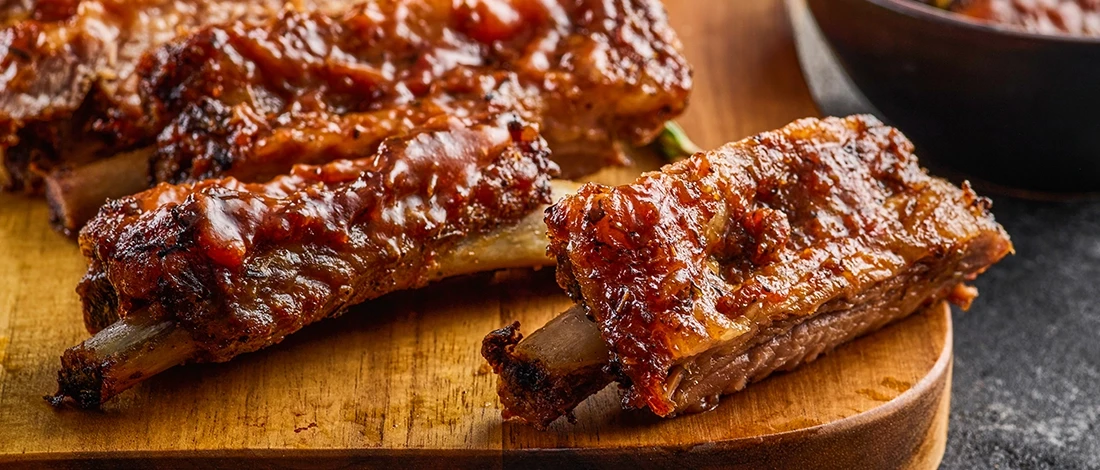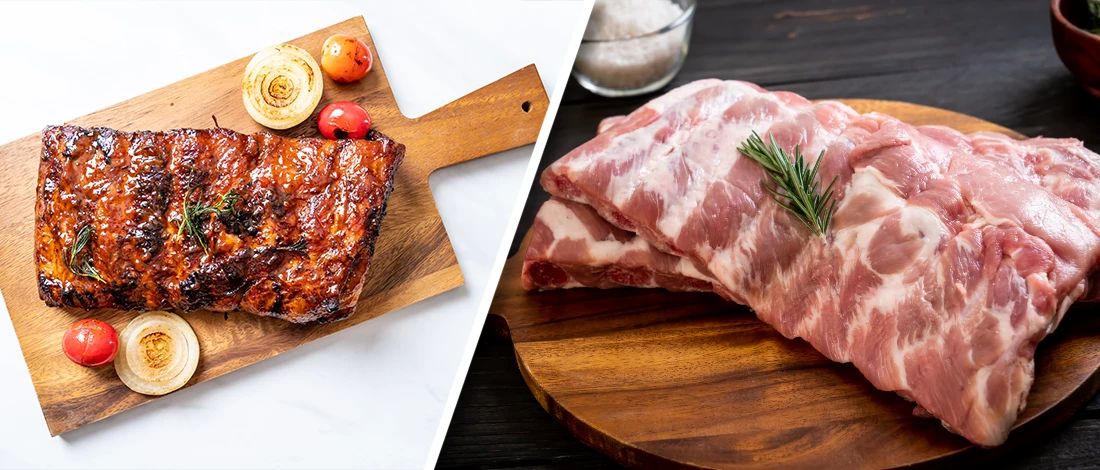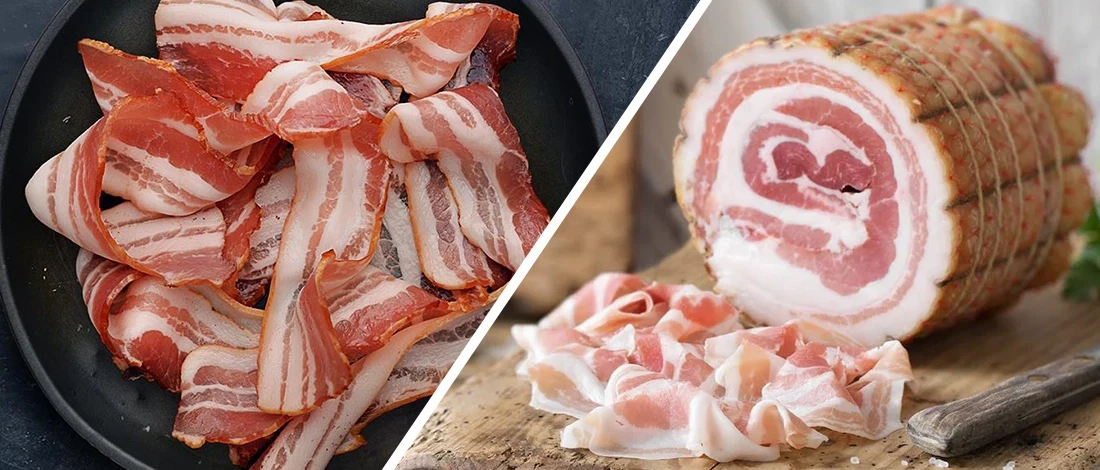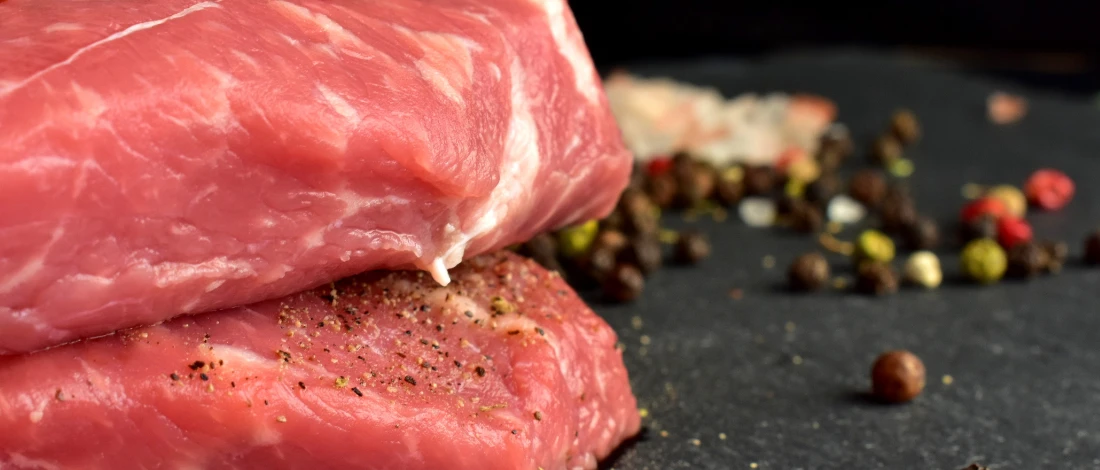As someone who’s been on a carnivore diet for over a decade, I know that baby back ribs and spare ribs cause a lot of confusion for rib novices, but their taste, marbling, and nutrition set them apart.
I've been preparing both ribs for a long time, so I compiled this in-depth guide to help you decide which ribs are ideal for your upcoming meal.
Quick Summary
- Baby back ribs are cut from the loin where the rib joins the spine, while spare ribs are cut from the lower rib piece on the pig's belly.
- Spare ribs have more meat within the bone and white patches of marbling.
- Baby back ribs are best cooked at high heat to retain moisture.
9 Differences between Baby Back Ribs and Spare Ribs
Whatever type of ribs you select, getting your meat from a reputable supplier is necessary. I buy most of my meat from ButcherBox since they offer all-natural, humanely grown selections.
Regarding pork ribs, both baby back and spare ribs are well-liked options. But you need to be aware of a few significant differences between the two.
1. Location
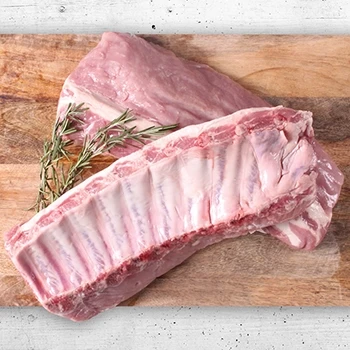
The location is the main factor in determining whether the ribs are baby back or spare ribs.
Baby back ribs are sliced from where the rib cage joins the spine. The upper ribs are referred to as baby backs because they are shorter than the larger loin ribs.
Since it comes from the loin muscle with loin meat, baby back ribs are sometimes called pork loin back ribs, back ribs, or loin ribs.
Spare ribs are cut from the bottom of the ribcage. They have meaty ribs that remain after removing the animal's belly. It contains the breast bone and rib tips.
The chewy cartilage, rib tips, and hard pig's breast bone are typically removed to create the well-known St. Louis cut ribs, which are more rectangular. That's why spares are often called side ribs.
2. Marbling
The baby back section has less fat but is still leaner since it's close to the pig's loin. Compared to spare ribs, baby back ribs are significantly slimmer and slightly drier. But they still have a rich flavor.
Spare ribs have more meat between the bones with fat patches on top, so it typically has more marbling that completely alters the flavor and quality. For this reason, spare ribs tend to have more flavor than baby backs.
"Marbling is the white specks of fat that give lean red meat its flavor, tenderness, and juiciness."
- United States Department of Agriculture
3. Taste & Texture

Baby back ribs contain less fat and connective tissue, resulting in leaner and more tender meat. Lean muscle tissue, which has a mild and sweet flavor, contributes to the meat's increased flavor.
This results from their closeness to the loin muscle towards the back. They occasionally have around an inch of loin meat attached.
On the other hand, spare ribs have more fat, which might add more flavor, but the extra fat can also make the meat chewier, which some people might not like.
4. Size & Weight
Size is the critical distinction between these two pork ribs. There are typically 11–13 ribs on an average rack of back ribs, enough to satisfy a hungry adult.
It weighs between one and two pounds since it contains less meat between ribs.
Each baby back rib can be anything from one to six inches long. The ribs, however, thin off towards the shorter part of the rack and are only approximately three inches long.
A rack of spares needs to have a minimum of 11 ribs weighing three pounds per slab. While weighing more than the regular rack of baby backs, your rack of spares has far more bone and cartilage.
5. Appearance

A rack of spare ribs is flat and rectangular, as opposed to the curved, more diminutive baby back rack, making them simple to differentiate from baby backs.
Their flatter bones have the benefit of making them easier to brown than baby backs.
Baby backs are less chewy, more curved, and shorter than spare ribs. The pork between the ribs makes up a significant amount of the long, slightly curved spare ribs.
6. Meat Content
Baby backs have less meat between the bones and a slight trim on the bone, though rare.
Compared to baby back ribs, spares have more meat between the ribs and flap meat, often called rib tips, so they are ideal for those who want a big plate of meat because they weigh about three pounds on average.
7. Cooking Time

Because they are inherently softer and more tender than spare ribs, baby back ribs are simple to prepare and cook quickly.
Baby back ribs take roughly 2 hours to cook because they're smaller.
Spare ribs may need to cook for up to 6 hours, depending on the thickness of the rack.
It takes longer to cook than baby back ribs since they are meatier and have more bone. Drizzle your preferred sauce over the meat to maintain moisture.
Also Read: Pork Rib Internal Temperature Chart
8. Cooking Method
Baby back ribs are best prepared at high heat, such as on the grill or the pan. High heat helps the meat cook evenly and maintain its flavor.
They frequently take between 2 and 3 hours to cook; therefore, they should be basted with sauce to keep the meat juicy.
On the other hand, braising or smoking ribs are great low-and-slow cooking methods for spare racks.
The breakdown of the large fat deposits during the cooking of the meat results in an end product that is tender and moist with crispy, dried-out edges.
9. Cost

Baby back ribs usually carry a higher price tag than a spare rack. These tender and lean choices are in high demand, so it's simpler for folks to prepare baby back ribs successfully.
As spare ribs are primarily made of bone and fat, their cost is typically substantially lower.
The flavor of spare racks is also naturally more robust, but they fall short in terms of tenderness.
Also, spare ribs require more room and effort and are more difficult to prepare correctly. That's why these ribs are a more affordable option.
Consider purchasing them if you need ribs for a big group of people for a barbeque and don't want to pay extra.
Related Articles:
Nutritional Differences Between Baby Back Ribs vs Spare Ribs

According to the USDA, the following is the nutritional information for baby back ribs and spare ribs for every 100-gram serving.
Baby Back Ribs:
- Calories: 229 calories
- Total Fat: 14.3 grams
- Saturated Fat: 5.71 grams
- Protein: 13 grams
- Carbohydrates: 10.7 grams
- Cholesterol: 54 milligrams
Spare Ribs:
- Calories: 397 calories
- Total Fat: 30.3 grams
- Saturated Fat: 13.5 grams
- Protein: 29.1 grams
- Carbohydrates: 0 grams
- Cholesterol: 121 milligrams
Notice that baby back ribs have less cholesterol, fat, and calories [1]. If nutrition is a concern, they are a better option than spares because of this.
Both pork ribs provide all the necessary amino acids for muscular tissue repair, making this protein a terrific way to nourish your muscles [2].
Spare pork ribs may be a superior option if you're aiming for a protein-rich dish because they have a higher total protein content [3].
Iron and zinc are abundant in spare and baby back ribs. Both minerals are crucial for immunity, and iron aids in providing oxygen to your cells and tissues by transporting it in the bloodstream [4].
FAQs
Which Are the Most-Liked Ribs?
Baby back ribs are the most liked ribs among people who prefer tender and leaner pork ribs. Similarly, people who love meatier and fatty ribs go for spare ribs.
Can I Substitute Baby Back Ribs with Spare Ribs?
Yes, you can substitute baby back ribs with spare ribs and vice versa. The bones of spare ribs are more numerous and extensive, so you'll need to make some adjustments.
Since they need more cooking time, you must extend the cooking period.
Are Baby Back Ribs More Tender than Spare Ribs?
Baby back ribs are more tender than spare ribs since they're cut from the lower back rib section of a pig's loin.
References:
- https://fdc.nal.usda.gov/fdc-app.html#/food-details/480901/nutrients
- https://fdc.nal.usda.gov/fdc-app.html#/food-details/167854/nutrients
- https://www.webmd.com/diet/pork-good-for-you
- https://www.ncbi.nlm.nih.gov/pmc/articles/PMC8840645/


